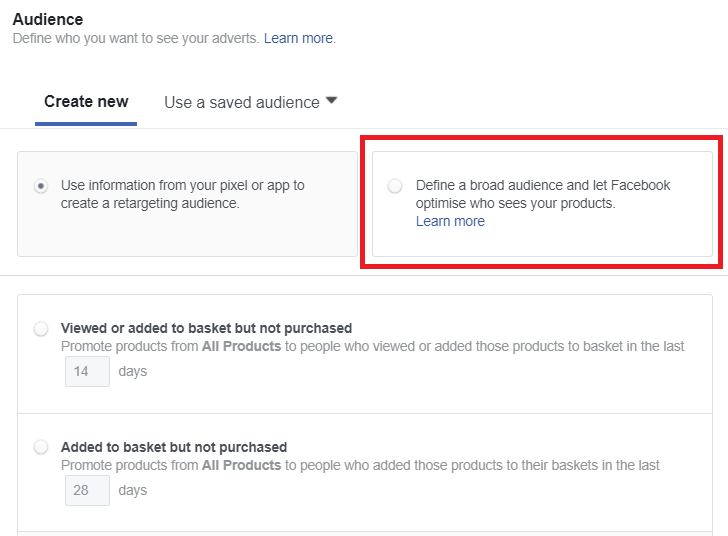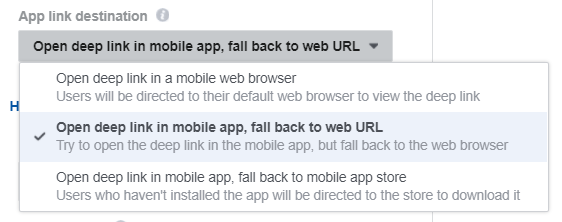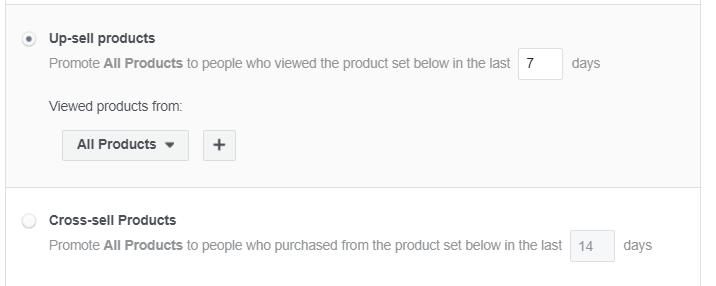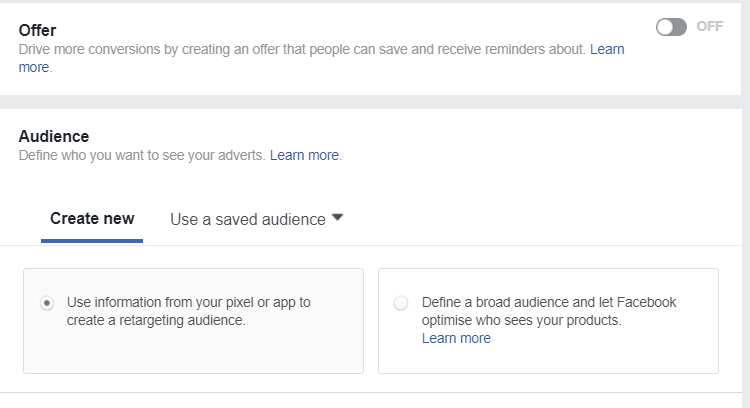Dynamic product ads (DPA) are the backbone of any Facebook ad strategy in the e-commerce industry.
With the ability to serve product items dynamically based on how a prospect interacts with your store, this level of personalization is what drives sales and lowers the cost per acquisition (CPA).
This is exactly why budgets for DPA increased by 164% year on year from 2015 to 2016.

But are you making the most of DPA? Here are five things you need to know about Facebook dynamic product ads.
1. You can target broad audiences
Up until January 2017, you were only able to use DPAs to retarget anybody who visited your website.
This meant that e-commerce stores with little traffic weren’t able to scale DPAs. Now you can target a broad audience and let Facebook optimize who sees your DPAs and which items they see based on their interests and website behavior at similar stores to yours.

For example, if your store sells women’s clothing, and a Facebook user has shown interest in women’s trainers, Facebook will dynamically serve them footwear or other relevant products in your catalog.
With the right broad targeting and creatives, DPAs can be one of the fastest ways to scale ads at the top of the funnel to reach new customers.
2. Deep linking to your app
Does your store have a mobile app with a large user base?
If so, did you know that you can use deep linking so that when a prospect clicks the DPA the product will open in the app?

If the prospect or customer doesn’t have your app on their phone, then you can set the link to direct back to your mobile store. Deep linking is ideal when targeting customers who will most likely have your app installed as you can offer them a seamless ordering experience on mobile.
3. It’s the easy way to increase customer lifetime value (LTV)
As an e-commerce store owner or marketing manager, you know the importance of pumping your customer LTV as much as possible.
Just like how your email marketing cross-selling and up-selling is automated, your Facebook ads should be too.
By using DPAs, you can up-sell and cross-sell customers based on items they viewed or purchased within a 180-day window.

If your store is getting a lot of daily traffic and orders, it’s literally a 24/7 job to manually run ads to cross-sell or up-sell without DPAs.
4. Plan ahead to get the best ROI
Facebook states:
“We can deliver your dynamic ads most effectively when they’ve been live for the full length of their retention window.” – Source
A retention window is the total amount of time you would like to keep someone within a website custom audience. For holiday seasons or prime-time sales, Facebook strongly recommends you set up your DPAs a week or two in advance with new creatives and copy and leave them paused until they are ready to go live.
Setting up DPAs in advance, even when paused, will increase their likelihood of getting immediate results than if you set the campaign on the day you want it to go live.
5. You can combine it with offers
Whether you run a video view, website clicks, page post engagement, or DPA objective, in the end you’re paying and fighting for the same thing: a user’s attention.
One of the best ways to get repeat engagement from an interested prospect or customer is through offers. Offers can only be used with website clicks, conversions, or DPAs at this time.

In an older blog post we showed you how the offer objective has changed and how you can leverage it during holiday season.
If you’re too busy to read that article, the offer feature engages with the user via email, and Facebook notifies the customer that the offer has been saved the next time they access Facebook via desktop. If the customer fails to redeem the offer, they are alerted once more and again 24 hours before the offer is about to expire.
The offer feature, combined with tip #1, is a great way to get new prospects into your funnel and out on the other side as happy customers.
How are you using DPAs?
The fastest way to go from $100k to $1m in sales using Facebook ads is by leveraging DPAs in every way you can.
For e-commerce stores with hundreds of products and not enough hours in the day to promote them all, DPAs are your answer.
Are you using DPAs to the best of their ability to grow your store to where it needs to be?